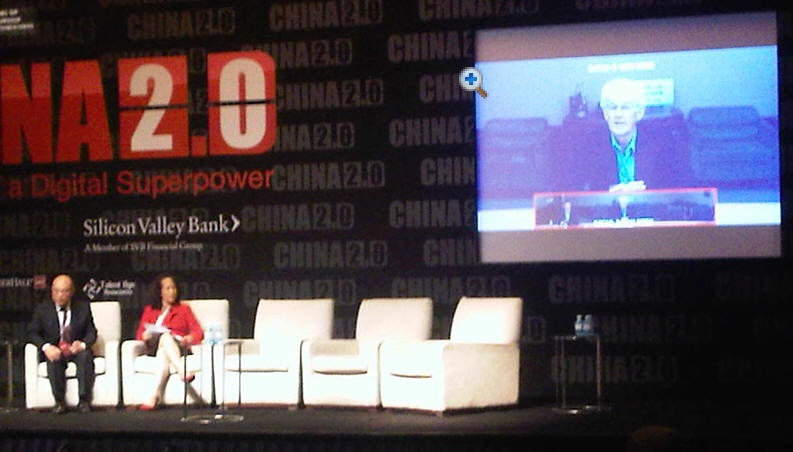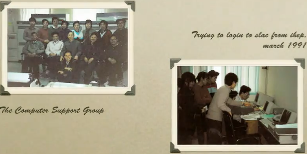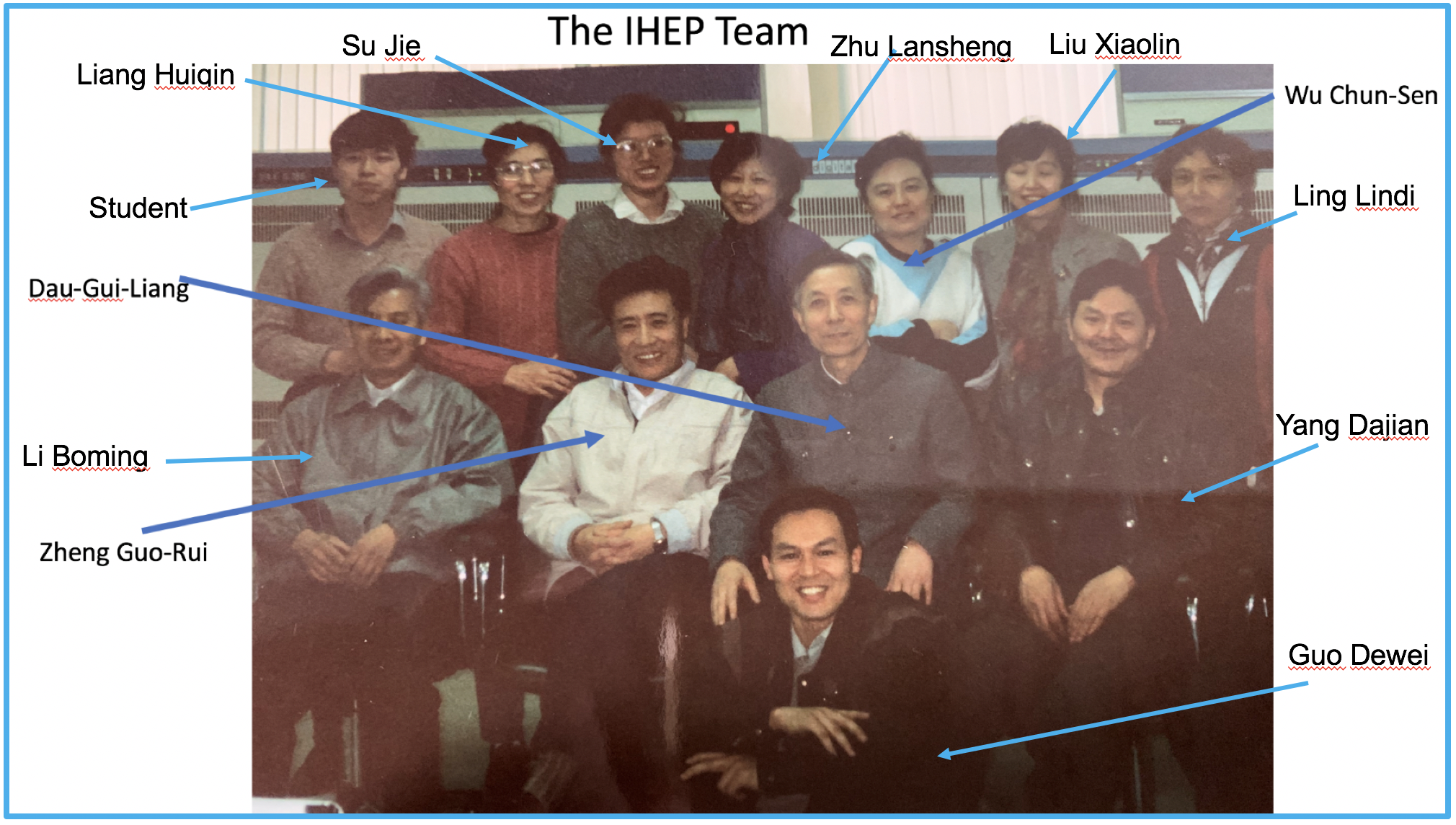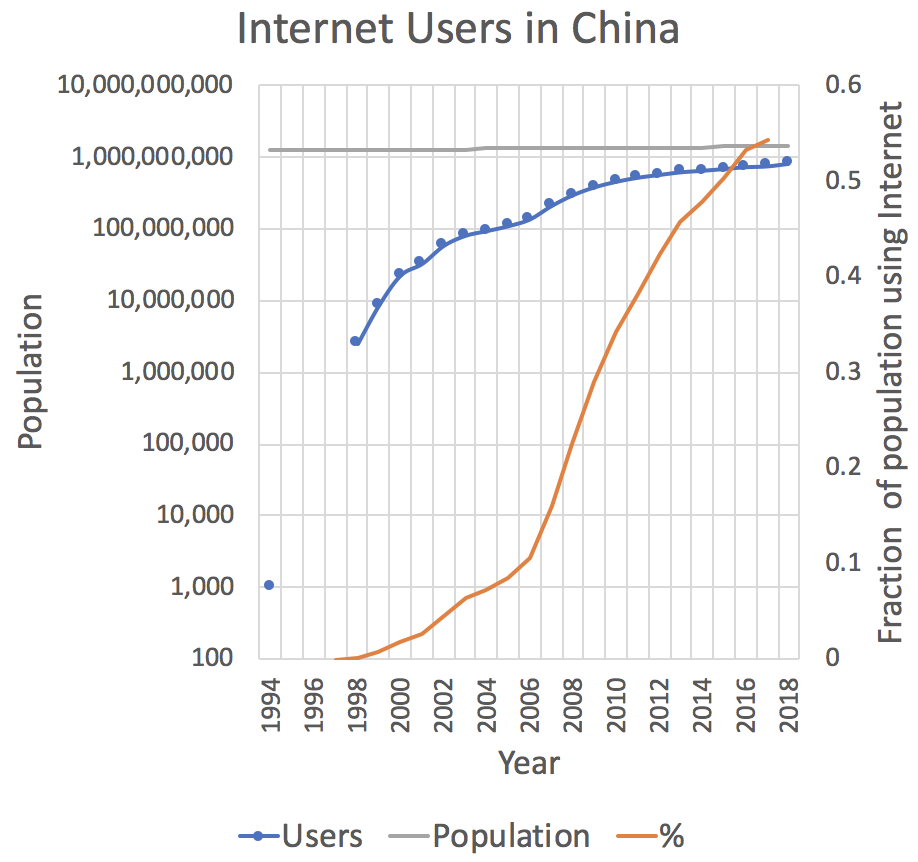2010 China 2.0 Conference Stanford
Stanford hosted the "China 2.0: The Rise of a Digital Superpower" conference in Beijing. See the netmanpub:Press Release for more details.
"Key features include the premiere of a video re-tracing how China first connected to the Internet in 1994 followed by a live TelePresence(r) reunion of some of the pioneering engineers who established that link: Rongsheng Xu at the Institute of High Energy Physics (IHEP) in Beijing and Les Cottrell at Stanford University's Linear Accelerator Center (SLAC)."
The conference opened on Monday morning 10/18/2010 Beijing time or 6pm Sunday Pacific time. The Stanford end was at at the Cisco Executive Briefing Center in San Jose, since Stanford had problems getting their Telepresence video working to Beijing via its AT&T link.
Session on China Internet Connection
- Introduction of first connection to Internet for China/show new video of interviews from Les Cottrell and Xu Rongsheng (5-6 minutes)
- Welcome and Introduction to Xu Rongsheng, IHEP, and Les Cottrell, SLAC, by Marguerite Gong Hancock, Stanford, as moderator (2 minutes)
- Greeting between Rongsheng and Les via video, then discussion as led by Marguerite, to amplify or augment topics introduced in video. Questions may include the following topics (10-15 minutes):
- Establishing that pioneering connection to the Internet required a combination of institutional, technical and personal advances. Please tell us more about what it took to establish the link.Three things stand out:
A major contribution was Panofsky's vision and recognition of the importance and enthusiastic encouragement. For me this turned it from a boon-doggle of a simple tourist trip to China to a mission
When I got to IHEP the friendliness, and enthusiasm of the Chinese networking/computing people was outstanding and got things off on the right step.
However, I quickly realized that nods and smiles did not mean I was being really understood. I made the decision to slow down by writing what I was saying and leaving a written record. Throughoput this project clear communication was critical
- Can you describe the major technical challenges and solutions?
Making the phone lines and modems work and connecting up DECnet was amazingly simple. Also getting AT&T to provide the satellite link via Point Reyes was easy. Even getting the DoE to fund the satellite link was relatively simple.
Getting from the Beijing airport to IHEP was torturous. Then that dificulty was overshadowed by getting the link from The BTA building in the center of Beijing to with in 2 blocks of IHEP we tried infra-red, microwave, and finally found a fibre path that provided acceptable error rates.
Finally the last 2 blocks was the hardest, in particular there were problems converting the optical fibre signal to the copper link.
However all that paled with the adminstrative problems of getting agreement from the US Department of Commerce, The Department of Energy and the Department of Defense to export equipment and to carry Chinese traffic on the Internet
- At the moment of connection on May 17, 1994, what were the first messages sent, how did you and your team feel or respond?
Relief that after 3 years it was finally in place, and in the near term that a paper we were presenting on the project would have a very satisfactory closing paragraph, I quote from the paper:
"China is a huge country with enormous potential and ambitious plans to open up electronic communications. The High Energy Physics community should be proud to have pioneerd one of the first direct electronic links from the outside world into China, helping to open it up to the global community." - The rise of the Internet in China has been phenomenal in the intervening 17 years. As you reflect on the evolution of the Internet in China and the collaboration between China and the West, have there been any surprises? What do you think is most significant?
I soon realized that the importance of connecting up China went way beyond High Energy Physics. For a long time given the Tiananmen Square event I thought the major problems of getting China onto the Internet would come from the Chinese end. I thought this would be due to Chinese government concerns about keeping a lid on society and the open-ness of the Internet. However, I was surprised to find most of the concerns came from the US end.
- As you reflect on your role in that historic link, do you have any final words you would like to share with us today?
I am continually surprised by how far China has come since I was first there in 1991. Bicycles have become cars, there are more and more ring roads around Beijing, China has quickly become economic power house, some things are far more open than would have ever have guessed. Much of this is attributable to the Internet, and I am proud of all the many people both in China and the US who assisted to successfully bring China into the Internet community.
- Establishing that pioneering connection to the Internet required a combination of institutional, technical and personal advances. Please tell us more about what it took to establish the link.Three things stand out:
Photo of video conference between Beijing and Silicon Valley for the opening of the conference with Xu Rongsheng (on left) and Les Cottrell (on video screen to the right) sharing reminiscences of the setting up of the Internet link between China and the US |
|---|
1994 paper on Networking with China
Other Information
- First email link to China
- SLAC Archives document on Les' role by Jean Deken. An overview including key dates in 1970's and Panofsky's early efforts.
- Chinese Visitors to SLAC 1983
- Burt Richter, the director of SLAC at the time was very instrumental in convincing DoE of the importance of this project and that it should be funded. See extract from Burt's 1990 trip to China report.
- Invitation to Dr. Les Cottrell to visit China 1991
- Photos from Dr. Les Cottrell's trip to IHEP, Beijing, China 1991
- Networking with China, paper published at CHEP 1994
- YouTube China's first Internet connection, 1994,
- China celebrates 10 years of being connected to the Internet, PCWorld article, May 17, 2004
- Les Cottrell: Bringing the Internet to China, Symmetry Magazine, 11/1/2005
- "Contributions of HEP to China Internet" (mainly in Chinese), Rongsheng Xu, Aug 25, 2006.
- China Internet Connection 2010, including a video
- I put together a Powerpoint presentation to capture my thoughts in preparation for the China 2.0 meeting, October 2010.
- YouTube, Les Cottrell interview
- How Stanford and China first Connected, Cisco Blog, 10/17/2010
- Point Reyes, California Ground Station, 2010
- Pioneer's of China's first Internet connection recall work, PCWorld article, Oct 18, 2010
- China's father of the Internet tracks changes, from China daily 20th October 2010
- Presentation at the Symposium on 30 years of BES physics, September 5-6 2019.
Visit by Zheng Guo Rui to SLAC 2/8/2013
Les had a call from the SLAC guard gate to say he had a visitor. The guard was unable to pronounce his name, so he spelt it. Les immediately recognized at as Zheng Guo Rui. Zheng had been visiting Silicon Valley with his daughter and son in law Andy Song and by chance spotted the SLAC sign. They thought it would be nice to look around and drove in. Les invited them to come to his office. There was just Andy and Zheng, Zheng's daughter was shopping at the Stanford Shopping Center. They soon got to reminiscing the days in 1991. Les found some old photos taken in 1991 and the recent YouTube Video. The photos are shown below.
Morning tea with Zheng Guorui (1991) | The team 1991. | Names of team members (ppt ) | Les & Zheng Feb 8th 2013 |
|---|---|---|---|
2019 IHEP Symposium on 30 years of BES Physics
Les was invited and agreed (with Prof Xu Rongsheng), to give a 20-minute talk entitled "First international computer network connection between China and US". at the Symposium on 30 years of BES Physics to be held at the Institute of High Energy Physics, Beijing, P. R. China, from September 5 to 6, 2019. The web page for the symposium is https://indico.ihep.ac.cn/event/9761/. Les put together a presentation entitled First permanent computer connection between China and the US.
As part of the preparation he put together a spreadsheet on Internet users in China:




